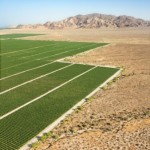 It’s no secret that energy and food prices have been the fastest rising component of the monthly CPI report. As a result, investors have poured money into crop-focused ETFs at an alarming rate, as the WSJ (subscription required) reports in “Playing With Your Food:”
It’s no secret that energy and food prices have been the fastest rising component of the monthly CPI report. As a result, investors have poured money into crop-focused ETFs at an alarming rate, as the WSJ (subscription required) reports in “Playing With Your Food:”
Corn costs more than twice what it did last June. Wheat futures have shot up by three-quarters. Soybeans have soared by nearly half.
For lots of investors, those are mouth-watering numbers—and they’re snapping up exchange-traded products that specialize in agriculture. But moving into this market can mean risks and complications.
The returns of crop-focused funds can vary significantly from the prices in news headlines, due to the quirks of futures investing. And some funds hold shares in agriculture and food companies, which can be hurt as well as helped by rising commodity prices.
Of course, there’s an even more basic worry—that commodity prices will fall instead of rise. Cotton shot up over 50% from early January to early March, and then dropped nearly 15% within two weeks.
In the first two months of this year, buyers poured $1 billion into one of the largest agriculture-related ETFs, Market Vectors Agribusiness, according to National Stock Exchange, a data provider. What’s more, new investment products are coming to market to meet investor demand. Teucrium Trading LLC, for instance, launched a corn-futures fund last June and is talking to regulators about opening similar funds for wheat, soybeans and sugar.
Behind all the activity is a simple assumption: Food is a basic human need, and people in the developing world will want more of it as their living standards rise. But just because food prices are soaring doesn’t mean a commodity ETF will.
…
Over the past year, for instance, cotton prices have jumped about 150%. Yet investment vehicles that hold cotton as well as other commodities have posted very different returns. Elements Rogers International Agriculture, marketed by Merrill Lynch, rose 50% in the 12 months ended March 24, while the PowerShares DB Agriculture fund rose 38%. Among the reasons: The Elements offering is linked to the Rogers International Commodity Index-Agriculture, which was devoted 12% to cotton as of January, while the PowerShares index was less than 3% cotton.
A quirk of commodities futures can also affect returns. Funds that deal in monthly futures contracts routinely sell expiring contracts and buy new ones, because they aren’t taking delivery of the actual goods. But new contracts have frequently been more expensive, because of carrying costs and many investors’ belief that supplies may be constrained or demand may rise in the future.
That increase from contract to contract is called contango, and it can cut into fund returns. Some ETFs try to lessen the impact by buying contracts that expire in various months, but that doesn’t eliminate the effect.
…
Investors should also bear in mind the differences between the types of exchange-traded products. Exchange-traded funds, like PowerShares, generally hold futures or securities. Exchange-traded notes, like the Elements product and Barclays Capital’s iPath offerings, are debt obligations whose issuer promises to pay a return. In the Elements ETN, for instance, Swedish Export Credit Corp.—a double-A-rated company owned by the Swedish government—promises to pay investors based on price changes in the Rogers index.
The ETN structure can eliminate the risk that returns will diverge from an underlying index. On the other hand, investors are betting that the issuers can make good on their obligations. The financial crisis provided a strong illustration of this danger, by bringing many institutions to their knees.
Another caveat: Commodities ETNs that pay out returns based on futures prices—as opposed to an index—also don’t precisely match the prices in headlines. One reason: Issuers need to account for the costs of hedging and trading. And those costs come out of investor returns.
That is a lot of confusing information. Personally, I tried to keep it simple by participating in the agricultural boom via the commodity index DBC, which is up over 15% YTD. Since that is one volatile area, I have limited my exposure to about 5% of portfolio value, as shown in the first of five model portfolios featured every Wednesday.
While this boom may have a ways to go, you can never be sure. I will protect the downside risk via my 10% trailing sell stop, which means that if prices head straight down from here, I will be able to lock in some gains.
That’s what I mean when I talk about staying with the trend until the end, when it bends (and my sell stop gets triggered).
Contact Ulli